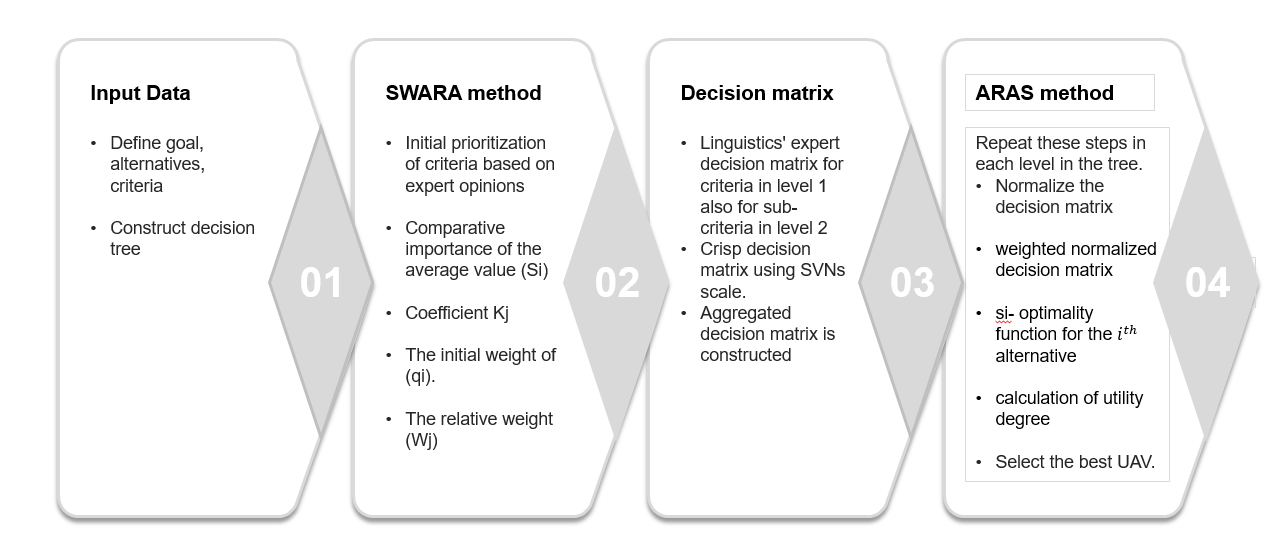An efficient Method for Evaluation of Unmanned Aerial Vehicles: A Case Study in Livestock
Main Article Content
Abstract
The increasing popularity and ease of use of unmanned aerial vehicles (UAVs) have made them a thriving technology in various fields. One of their applications is in the animal revolution, where they are used to count, monitor, and detect livestock accurately, contributing to the development of the animal revolution. However, with so many types of UAVs available, it can be challenging to decide which one is most appropriate for the task at hand due to their varying characteristics. To address this issue, the suggested model is constructed utilizing neutrosophic sets to effectively manage uncertainty and deal with multi-criteria decision-making (MCDM) situations with several conflicting criteria and options. The proposed model integrates Stepwise Weight Assessment Ratio Analysis (SWARA) and the ARAS methods for evaluating the performance of UAVs in livestock based on diverse criteria and their importance, along with single-valued neutrosophic sets (SVNSs). The SWARA method is used for calculating the weight of criteria, and the ARAS method is used for ranking alternatives. An experimental case study has been established for choosing the best UAV to detect livestock using the data extracted from the thermal and multispectral UAV images.
Downloads
Article Details

This work is licensed under a Creative Commons Attribution 4.0 International License.





